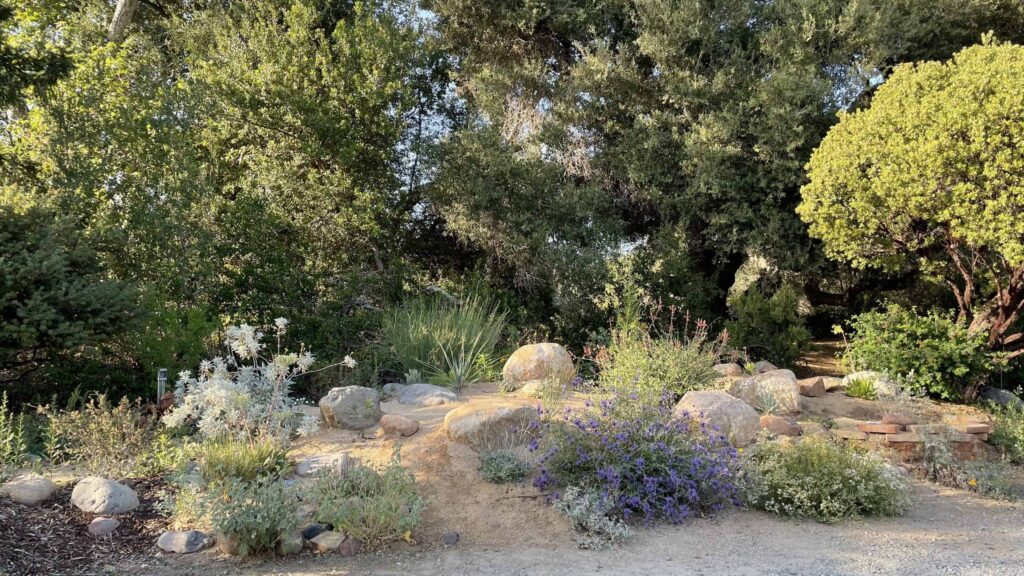
Hello summer. Well, it looks like 5.67” will be our total at TOLN for the rain-year 2020-2021, which officially ends at the end of this month. That’s less than half our “normal” amount. Native plants and natural gardens can handle it. Our natural ecosystems are adapted and suited to whatever nature throws at them, but the human population might have something to be worried about.
Current events, history, review, and notes
When the “atmospheric river” fails to flow, our rivers, streams, creeks, water holes, and soils stay dry. Though the term might be relatively new, it turns out that the status of water in the West, now and for millennia, depends on a few big winter storm events, riding in on the “atmospheric river.” Or not. Also called the “storm track”, and generally following the jet stream, if a big “atmospheric river” is in place we get pounded with floods. If it skips a few years, we go into drought. And we certainly had no drenching rains last season, so any news you read about drought this year is not fake news.
Watering
Picture your soil as the bank and water as the currency. Plants make withdrawals as needed. Your job, especially in a dry year, is to make sure the account is replenished so plants can find water 14-20” deep in the soil, where the feeder roots are. The layers between the deep root zone and the surface should stay moist as well, especially for perennials and flowering groundcovers that have shallow roots.
You’re successful at this job when you utilize the method called “Occasional Deep Soak Plus Frequent Refreshing Sprinkles.” Give a Deep Soak when the soil is dry to the touch 4” down. Do “Refreshing Sprinkles” anytime.
Here it is by way of review:
- “Deep Soak.” Put water in the soil. Apply the equivalent of a 1.5-2” rain event to the entire planted area every 3-4 weeks. Use the “pulse irrigation” technique to apply approx .5” per day, in early mornings, for three consecutive days. For most sprinkler systems you would run the sprinklers approx 40 minutes each day. You won’t need to do this again for around 3 weeks, though the interval could be between 2 and 4 weeks depending on weather, soil, garden maturity, exposure, and many factors. The point is to infrequently but thoroughly soak the soil to a depth of 14-20”. Try to water in anticipation of extreme heat events. Best to water on early mornings on days with cooler summer overcast conditions. This puts moisture where roots will find it when they need it.
- “Refreshing Sprinkle.” Put water on the plants and soil surface only. Best done by hand (it’s fun) or with the irrigation system, Refreshing Sprinkles take the stress off the plants during hot weather. It’s simple. Go out at the end of the day, in summer, 7:30 pm or so and wet the entire garden with a spray nozzle on your garden hose. Wash the leaves, and wet the soil surface. Spend no more than 5-10 minutes. Turn the hose straight up overhead and take a quick garden shower so you can feel the instant cooling your plants are getting. Watch for hummingbirds who may slip in for a quick bath. You can do Refreshing Sprinkles 2-3 times a week or more, always at the end of the day. This moisture refreshes the leaves and cools the entire site so the garden has a restful “sleep” and can start the next hot day with no stress. Virtually no moisture soaks into the root zone, but the new moisture on the surface helps lock in the valuable moisture from your Deep Soaks. Also plants can absorb water through their leaves, especially in late afternoon.
Related to Watering
Look at your terrain. If water absorption can be improved by building a few little mounds, or digging some small channels, make your microtopography an efficient texture. The idea is to produce zero runoff when you are watering.
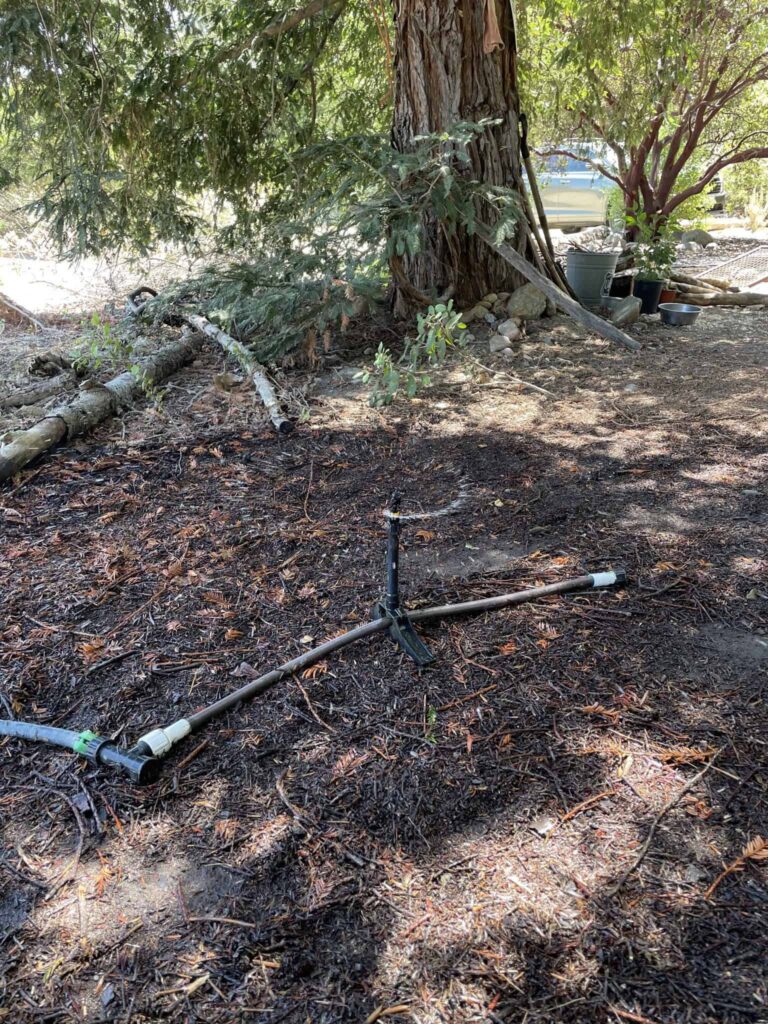
Water by hand as needed. This cannot be overemphasized. Use a hose-end watering wand or set a mini sprinkler to water sections of the garden. The finest natural gardens only use the automatic sprinklers as a backup system. Hand watering is best.
Pruning
June is generally mild, (June gloom) but the days are long. We can get clear, bright, hot, sunny spells called heat waves, and when we do, they are brutal because the sun is so high in the sky. Therefore, avoid any pruning that would expose branches or leaves that are accustomed to the shade of the plant’s canopy. Tip pruning is OK, as is deadheading dry flowers.
Weeding
Summer weeds are making their appearance and should be eradicated on an ongoing basis. No herbicides please. Pull them or chop them. Many gardeners find it easier to pull a few weeds all the time on sight, rather than procrastinate and plan one major weeding event that is usually no fun. Either way, just stay on top of it.
Mulching/Top dress
During warm weather, avoid importing fresh organic mulch or top dress because it generates heat in the process of breaking down and can cause disease problems. If you brought in mulch during the cool season, it has probably mellowed enough by now to be safe this summer.
Feeding
If you missed feeding in April/May, pick a cool spell in June, apply an organic fertilizer and do a Deep Soak. This is your last shot at this. No feeding this summer, (except potted plants and desert species).
Troubleshooting – Varmints, Pests and Diseases
As foliage starts to harden in preparation for summer, a few insects might show up, especially those with sucking mouthparts (Order: homoptera), i.e.; scale, aphid, white fly, psyllid, which attach themselves to the stems and leaves (sometimes the undersides). Often these insects are farmed by argentine ants, which also become active in the warm season. See details in Troubleshooting section of 2021 March in the Natural Garden and 2020 October in the Natural Garden. Strong water blast, insecticidal soaps, and neem oil are typical organic gardening treatments.
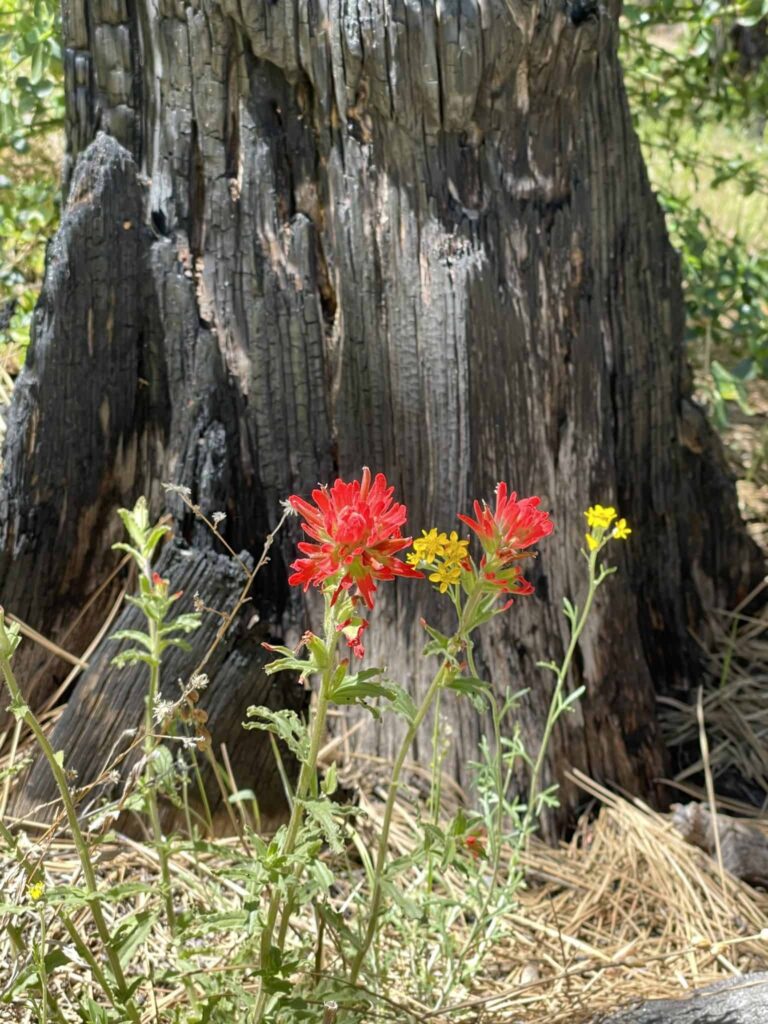
Annual Wildflowers
Most of the peak annual wildflower season is past, but with some flowers remaining, you can continue to enjoy your own version of a superbloom. Due to the drought, wildflowers were pretty scant in all the usual places, but a few cool woodland and meadow spots are still blooming heavily. Remember to enjoy your blooms in the garden and also as cut flowers indoors… and again in a few weeks as seed heads which you can collect and sort for sowing this fall.
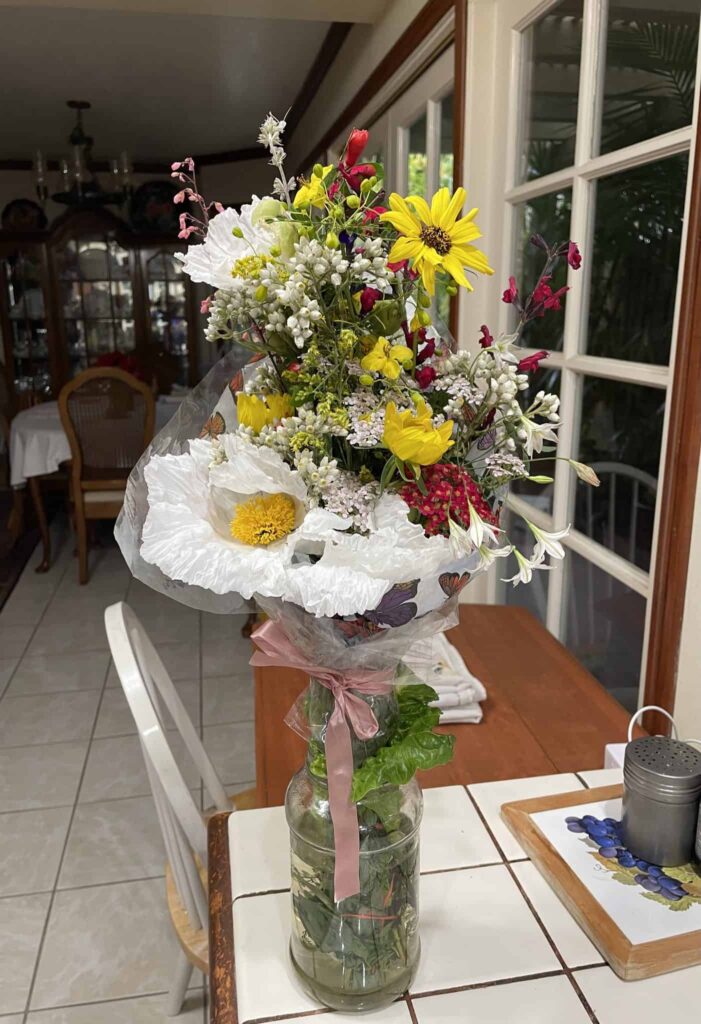
Adding New Plants
Summer is a great time to add plants in the shade, or in gardens not far from the coast. Also, this is the perfect time of year to plant desert plants. With bright sunny days ahead, you can shelter new plants from the afternoon sun with temporary individual makeshift shade screens. Be creative. And always use plenty of water when planting YouTube How to Plant a Plant and don’t let the root ball dry out for the next three months. Come on in! We have plants for all seasons and situations.
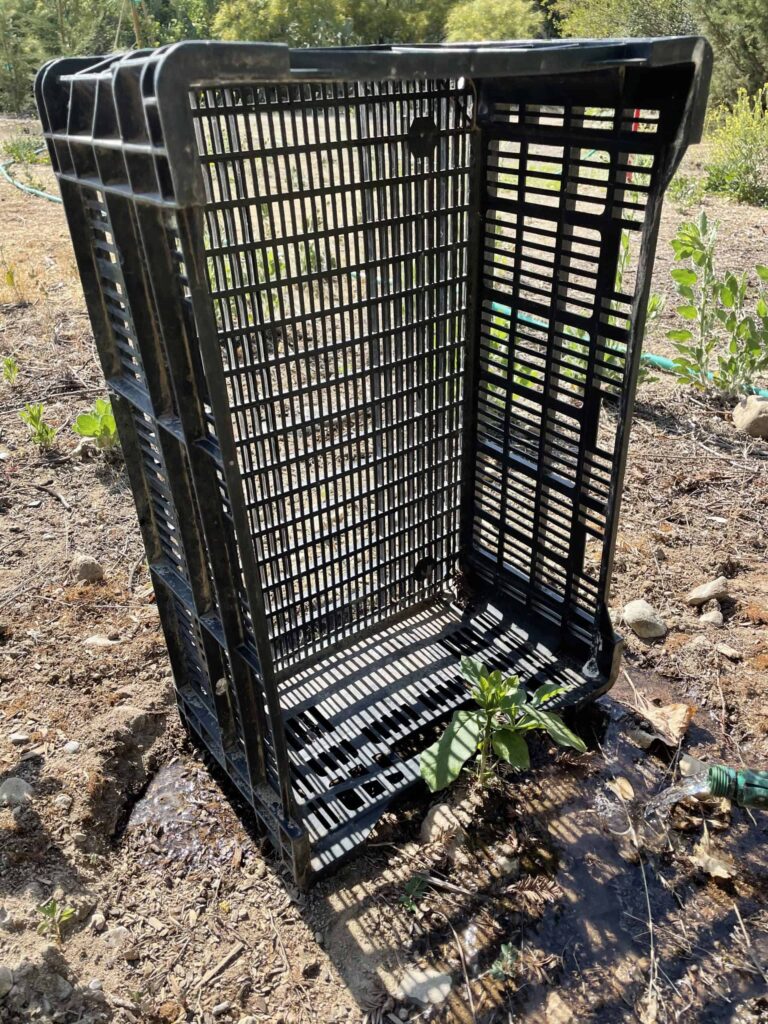
Engage
Moving into the “post Covid” period, life may be getting back to normal, whatever that means. For many of us, nature became a refuge, and a place for us to regain strength and hope during what turned out to be a very strange year. Lots of people discovered quiet outdoor experiences and gardening for the first time, and in that way, the pandemic became a life changer for them. As parks and trails are reopened, our time outside can now be shared with others… hiking together, sending photos, sharing maps, posting stories, and celebrating a turning point where we learned a new way to relate to our environment.
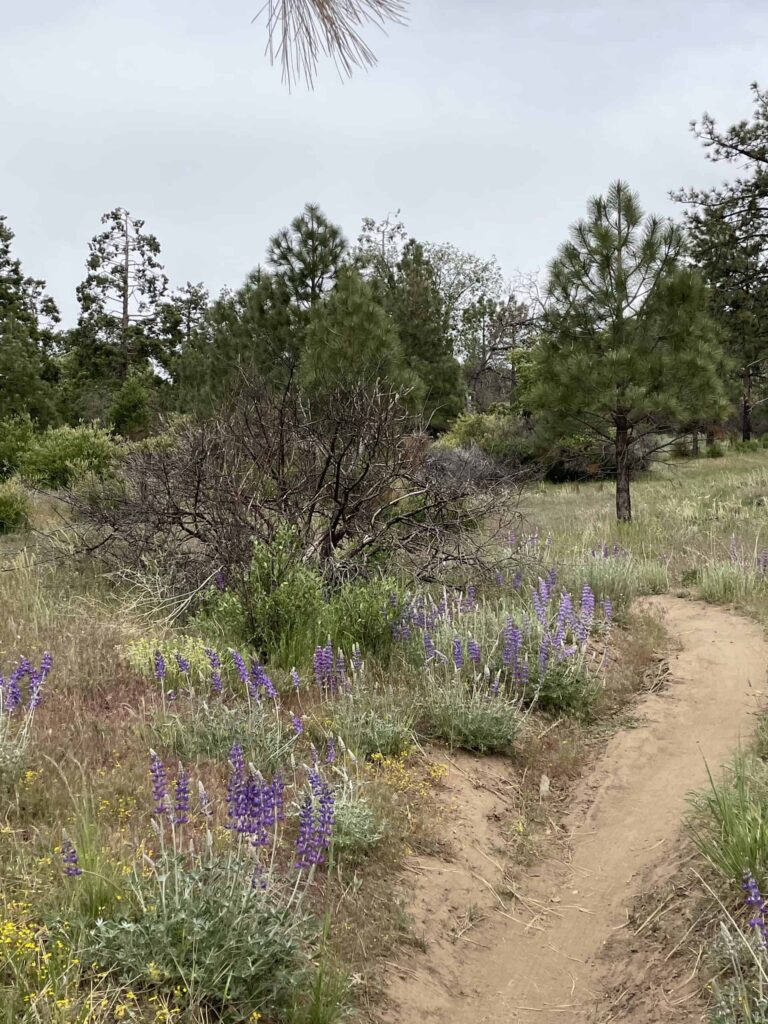
California is an amazing place. Our own natural gardens become our personal everyday refuge, inspired by such intangibles as our memories of a cool breeze through the forest, grasses swaying in a meadow, sunny openings bursting in vivid color, a congregation of violet-green swallows feeding on the fly, coyote scat on a ridge exactly where the view reaches out for 100 miles, and butterflies on a mission (are they?) flitting through sun and shade on their way to who knows what. They do. (Do they?)
One good thing about long days is that they afford long hours to experience these things. The lockdown caused many of us to reevaluate our priorities and learn of the rhythms, pace, tempo, and patterns of nature. The world changed and changed back again, meanwhile nature remained constant.
Oh that our perspective and relationship with nature would be ever changing, so we might grow from strength to strength; and at once steadfast, because in nature we will always find incomparable stability, safety and security!
Hey, we made it!
From the June Garden,
Mike Evans
Questions? Help is just one call or one email away. Call (949) 728-0685 or email (with pictures if you like) our special helpline: gardenhelp@californianativeplants.com